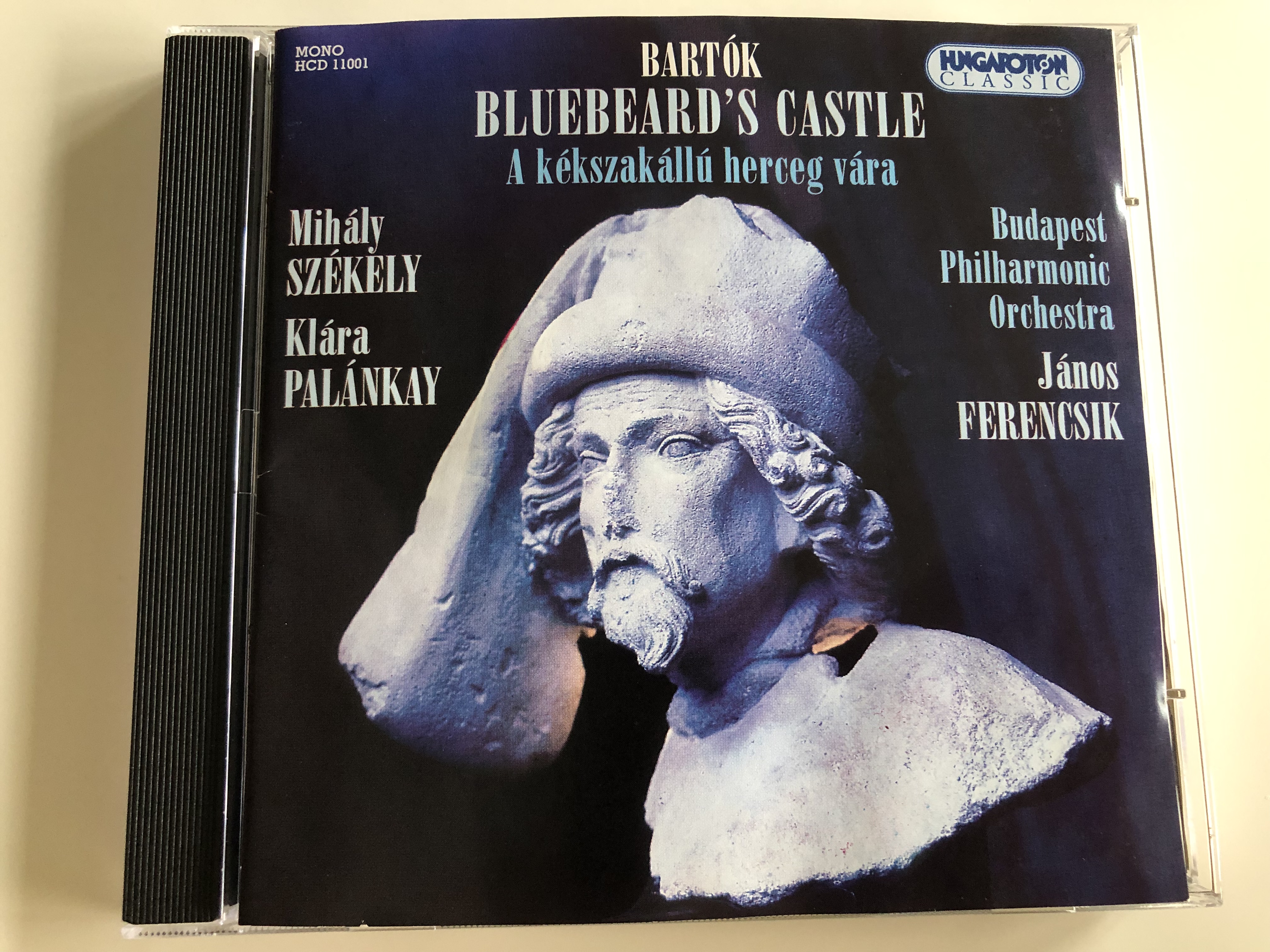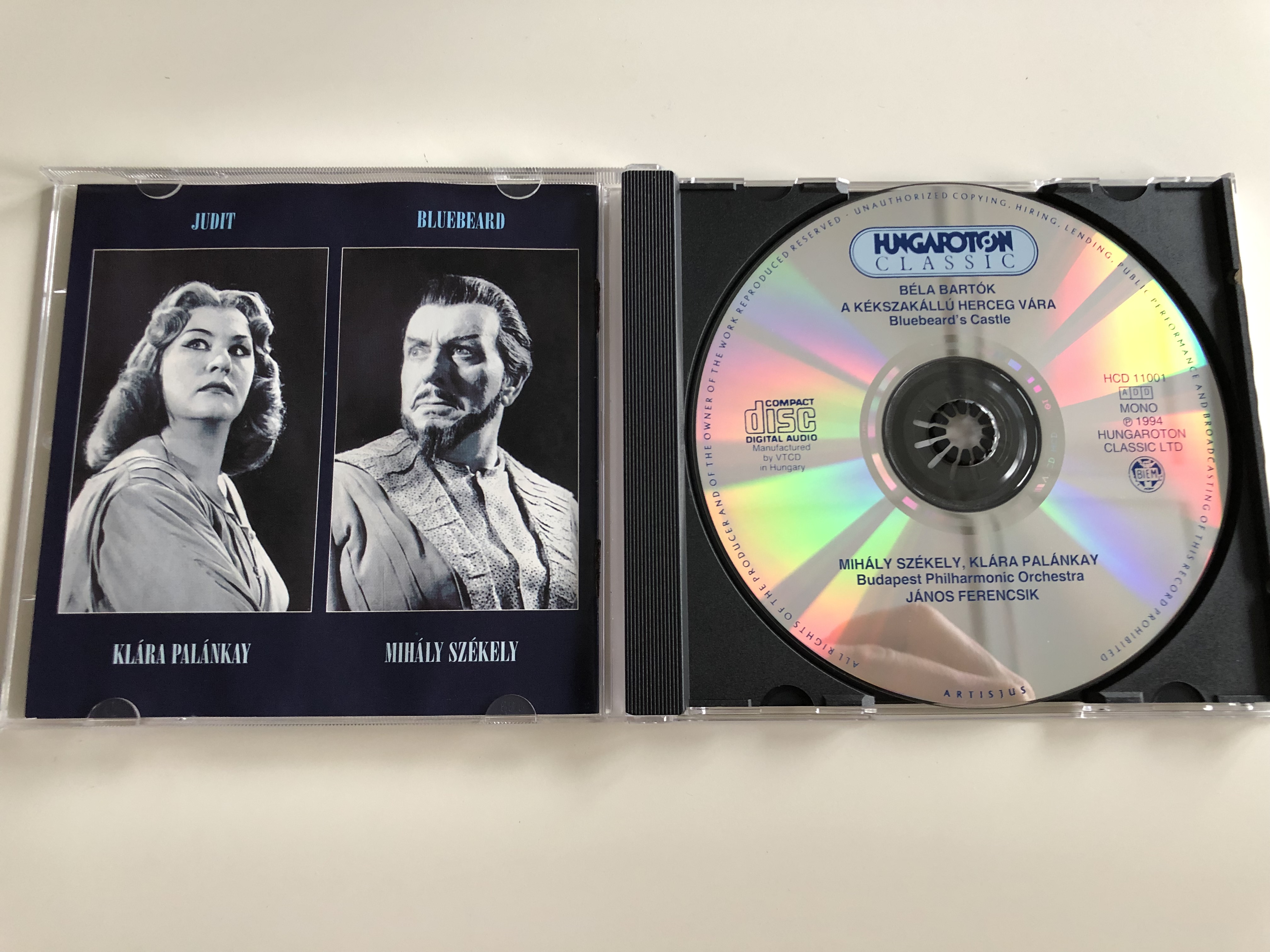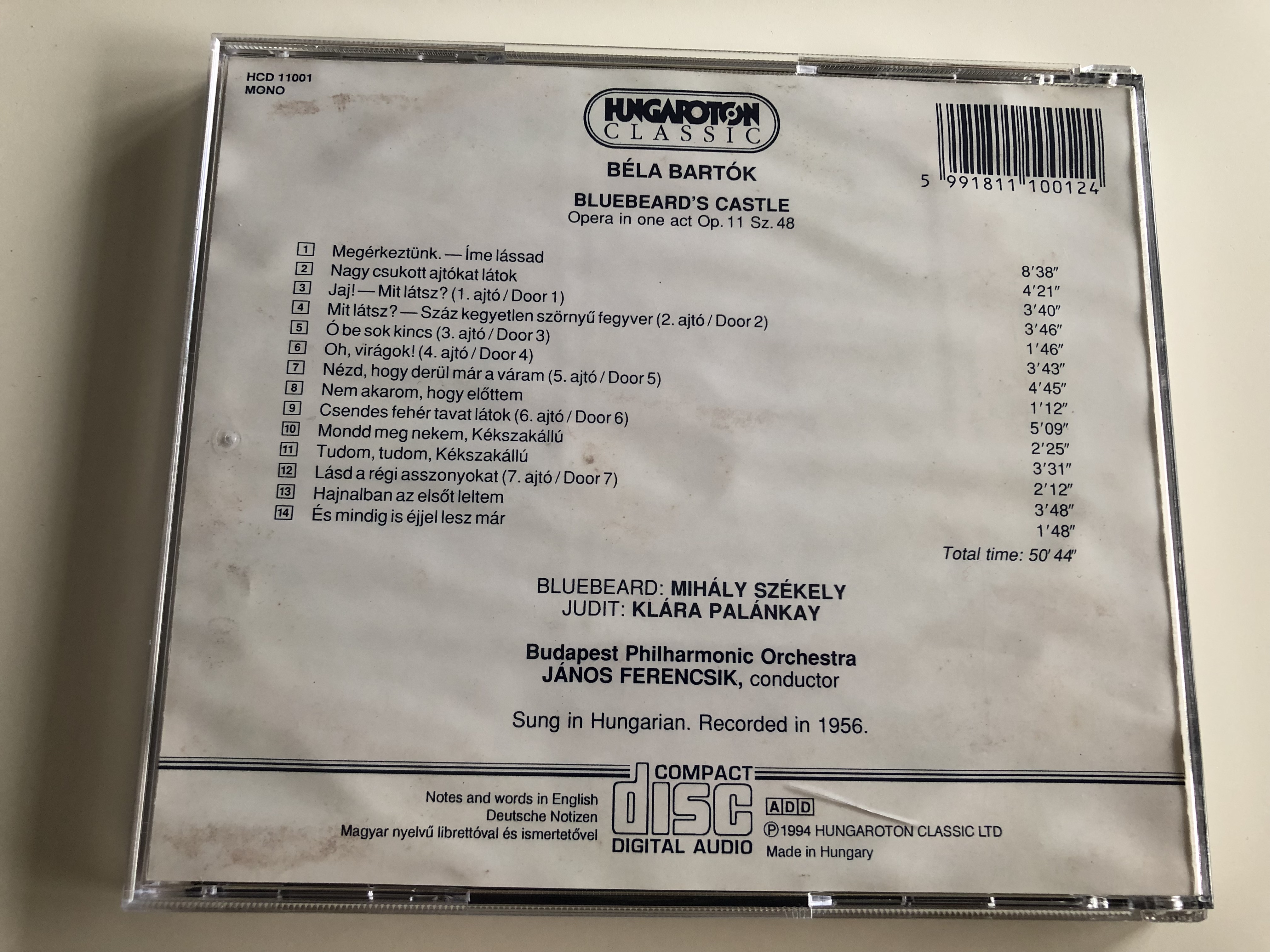Description
Bartók: Bluebeard's Castle - A kékszakállú herceg vára / Audio CD 1994 / Budapest Philharmonic Orchestra / Conducted by János Ferencsik / Mihály Székely, Klára Palánkay / Hungaroton Classic
HCD11001
UPC 5991811100124
MADE IN HUNGARY
TOTAL TIME: 50'44"
Bluebeard's Castle (Hungarian: A kékszakállú herceg vára; literally: The Blue-Bearded Duke's Castle) is a one-act expressionist opera by Hungarian composer Béla Bartók. The libretto was written by Béla Balázs, a poet and friend of the composer, and is written in Hungarian, based on the French literary tale La Barbe bleue by Charles Perrault. The opera lasts only a little over an hour and there are only two singing characters onstage: Bluebeard (Kékszakállú), and his new wife Judith (Judit); the two have just eloped and Judith is coming home to Bluebeard's castle for the first time.
Bluebeard's Castle, Sz. 48, was composed in 1911 (with modifications made in 1912 and a new ending added in 1917) and first performed on 24 May 1918 at the Royal Hungarian Opera House in Budapest. Universal Edition published the vocal (1921) and full score (1925). The Boosey & Hawkes full score includes only the German and English singing translations while the Dover edition reproduces the Universal Edition Hungarian/German vocal score (with page numbers beginning at 1 instead of 5). A revision of the UE vocal score in 1963 added a new German translation by Wilhelm Ziegler, but seems not to have corrected any errata. Universal Edition and Bartók Records has published a new edition of the work in 2005 with new English translation by Peter Bartók, accompanied by extensive errata list.
Tracklist:
| A Kékszakállú Herceg Vára Opera 1 Felvonásban Op. 11 = Bluebeard's Castle Opera In 1 Act Op. 11 | (50:44) | |
| 1 | Megérkeztünk - Ime Lássad | 8:38 |
| 2 | Nagy Csukott Ajtókat Látok | 4:21 |
| 3 | Jaj! Mit Látsz? | 3:40 |
| 4 | Mit Látsz? - Száz Kegyetlen Szörnyú Fegyver | 3:46 |
| 5 | Ó Be Sok Kincs | 1:46 |
| 6 | Óh Virágok | 3:43 |
| 7 | Nézd Hogy Derül Már A Váram | 4:45 |
| 8 | Nem Akarom , Hogy Előttem | 1:12 |
| 9 | Csendes Fehér Tavat Látok | 5:09 |
| 10 | Mondd Meg Nekem, Kékszakállú | 2:25 |
| 11 | Tudom, Tudom Kékszakállú | 3:31 |
| 12 | Lásd A Régi Asszonyokat | 2:12 |
| 13 | Hajnalban Az Elsőt Leltem | 3:48 |
| 14 | És Mindid Is Éjjel Lesz Már | 1:48 |
- Manufactured By – VTCD
- Phonographic Copyright (p) – Hungaroton Classic Ltd.
Credits:
- Bass Vocals – Mihály Székely
- Composed By – Béla Bartók
- Conductor – János Ferencsik
- Design – Miklós Juhász
- Engineer – György Balla
- Liner Notes – Péter Várnai
- Lyrics By – Béla Balázs
- Mezzo-soprano Vocals – Klára Palánkay
- Photography By – János Ekes
- Producer – László Beck
Mihály Székely (May 8, 1901 in Jászberény – March 22, 1963) was a Hungarian bass singer famous for Mozartian roles. His name in Hungarian form is Székely Mihály, his original family name was Spagatner.
He debuted as Ferrando (Il trovatore) in 1920 at the Budapest Opera, where he remained a principal singer until his death. His Metropolitan Opera debut was as Hunding (Die Walküre) in 1947. He recorded two versions of Béla Bartók's opera Bluebeard's Castle and worked closely with the composer at the 1936 revival.
His most famous roles were King Philip (Don Carlo), Fiesco (Simon Boccanegra), Osmin (Die Entführung aus dem Serail), Sarastro (Die Zauberflöte), Leporello (Don Giovanni), König Marke (Tristan und Isolde), Pogner (Die Meistersinger von Nürnberg), Boris Godunov, Basilio (Il barbiere di Siviglia), Gremin (Eugene Onegin) and Baron Ochs (Der Rosenkavalier). He sang in the Glyndebourne Festival several times, mostly in Mozart operas.
He died in Budapest, aged 61.
Palánkay Klára (Budapest, 1921. június 3. – Budapest, 2007. január 24.) magyar opera-énekesnő (mezzoszoprán).
János Ferencsik (18 January 1907 – 12 June 1984) was a Hungarian conductor.
Ferencsik was born in Budapest; he actively played music even as a very young boy. He took violin lessons and taught himself to play the organ. He studied at the National Conservatory of Music in Budapest, where his major subjects were organ performance and composition. He joined the Budapest State Opera at the age of twenty, where he was engaged as a rehearsal coach. In this capacity he took part in the Bayreuth Festival in 1930-31.
At Bayreuth, he assisted Arturo Toscanini, an experience which was to be of decisive importance for the remainder of his career. Between the two world wars, he studied in Budapest under such conductors as Arturo Toscanini, Bruno Walter, Felix Weingartner and Wilhelm Furtwängler.

































